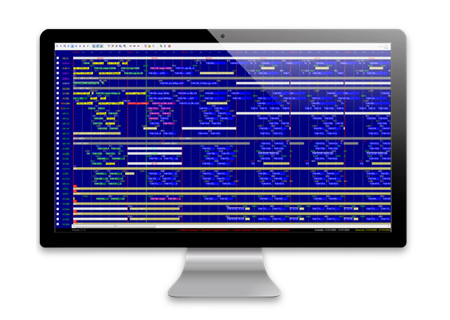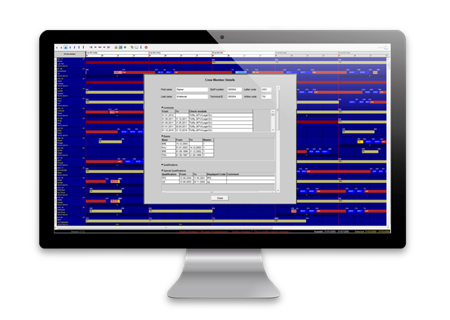Information System for Airlines and
PRODEFIS AIS
AIS provides secure access to real-time operative airline data as well as to historical and planning data. Interested parties and user groups include airline staff, handling agents, catering companies, airports, outstations/airport stations, crew rooms, pick-up partners or external maintenance companies.
AIS enables world-wide, easy and secure access to relevant data via the Internet. Internet-enabled personal computers are sufficient, there is no need for additional installations.
- AIS enables access to any desired data of an airline within seconds.
- The data to be displayed can originate from different systems.
- Users will get access to historical data, operative real-time data or even future planning data.
- Its sophisticated architecture provides simultaneous access to thousands of users, while at the same time minimizing the use of resources.
- A scalable Gantt chart allows for a customizable display of data.
- The use of search and filter features increases efficiency and productivity

Flight schedule

Crew roster and crew member details
AIS uses data from systems of different business areas, such as aircraft and flight management (scheduling, maintenance control, operations control, slot management etc.), crew management (rostering, crew contact, crew information, training etc.), airport management etc.
Examples of the integration and display of an airline’s data:
- Real-time flight schedule presented in a Gantt chart
- Flight details such as scheduled, rescheduled, estimated und actual times, estimated and actual pax figures
- Crews on flights
- Delay and slot information
- Maintenance and AOG events
- Real-time crew roster presented in a Gantt chart or alternatively in a table
- Crew-related data, such as qualifications, expiries, airport expiries, contracts, home bases, communication data, passports & visas etc.
- Duty sheets
- Aircraft details such as fleet and version information, total aircraft hours and cycles as well as additional technical details
Sustained reduction of
- Hardware and software costs for read-only users
- Administration costs
- Costs of communication (e.g. Telex equipment, security equipment such as SecurID and terminal server such as CITRIX MetaFrame)
- Catering-related costs (delays, extra (buffer) meals)
Sustained improvement of
- Processes
- Communications
- Data and decision quality